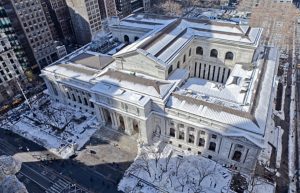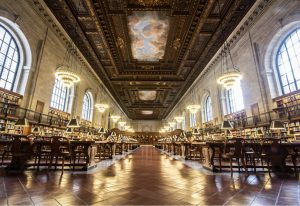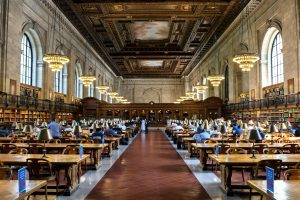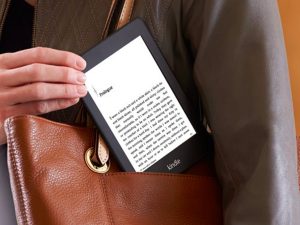new york public library
 As New York City grew is size, passing Paris in population and quickly catching up to London by the late 19th century too, it still remained the only city of such size to lack a public library large enough to serve it’s many citizens. It didn’t look like something that was going to change in the near future, but when former New York Governor Samuel J. Tilden died in 1886, he left $2.4 million to the city to “establish and maintain a free library and reading room in the city of New York.”
As New York City grew is size, passing Paris in population and quickly catching up to London by the late 19th century too, it still remained the only city of such size to lack a public library large enough to serve it’s many citizens. It didn’t look like something that was going to change in the near future, but when former New York Governor Samuel J. Tilden died in 1886, he left $2.4 million to the city to “establish and maintain a free library and reading room in the city of New York.”
While it was a wonderful gift, it remain unspent until May 23, 1895, when New York’s two largest libraries…the Astor and Lenox libraries…agreed to combine with the Tilden Trust to form a new entity that would be known as The New York Public Library. I’m not sure why the delay, other than maybe the loss of some of the smaller  “neighborhood” libraries. Whatever the case may be, the work finally began on the New York Public Library, and the final structure was spectacular.
“neighborhood” libraries. Whatever the case may be, the work finally began on the New York Public Library, and the final structure was spectacular.
The main branch of the library was dedicated in midtown Manhattan sixteen years later to the day. The library is the largest marble structure ever constructed in the United States, is dedicated in New York City. I don’t know much about construction, but it seems to me that marble construction might be harder. The building fills a two-block section of Fifth Avenue between 40th and 42nd Streets, the monumental structure took 14 years to complete at a cost of $9 million. Nevertheless, the day after its dedication, the library opened its doors to the public, and some 40,000 citizens passed through to make use of a collection that already consisted of more than a million books. The people of New York City were excited to have such a wonderful collection of  knowledge at their disposal…and for free. In a ceremony presided over by President William Howard Taft, the New York Public Library was dedicated on May 23, 1911. Gifts continues to roll in over the next few decades, and thanks in large part to a $5.2 million gift from steel baron Andrew Carnegie, a system of branch libraries opened throughout New York City, basically giving back some of the neighborhood library feel again. Today, the New York Public Library is visited and used annually by more than 10 million people, and there are currently well over two million cardholders, more than for any other library system in the nation.
knowledge at their disposal…and for free. In a ceremony presided over by President William Howard Taft, the New York Public Library was dedicated on May 23, 1911. Gifts continues to roll in over the next few decades, and thanks in large part to a $5.2 million gift from steel baron Andrew Carnegie, a system of branch libraries opened throughout New York City, basically giving back some of the neighborhood library feel again. Today, the New York Public Library is visited and used annually by more than 10 million people, and there are currently well over two million cardholders, more than for any other library system in the nation.

 On this day, May 23, 1911, President William Howard Taft presided over a ceremony to dedicate the New York Public Library, which is the largest marble structure ever constructed in the United States. The building occupies a two-block section of Fifth Avenue between 40th and 42nd Streets. The monumental Beaux-Arts structure took 14 years to complete at a cost of $9 million. The term beaux arts (pronounced BOZE-ar) means fine arts or beautiful arts. “The Beaux-Arts “style” emanated from France, based on ideas taught at the legendary L’École des Beaux Arts (The School of Fine Arts), one of the oldest and most esteemed schools of architecture and design in Paris.” The 20th century marked a period of great growth throughout the world, and new access to learning materials was needed. The first free continuous children’s library in the United States was funded privately, and was founded in 1835 in Arlington, Massachusetts. Nevertheless, libraries were in pretty short supply when the New York Public Library opened in 1911. One day after its dedication, the library opened to the public. It is thought that about 40,000 citizens passed through to make use of a collection that already consisted of more than a million books. It was a great day in the world of education.
On this day, May 23, 1911, President William Howard Taft presided over a ceremony to dedicate the New York Public Library, which is the largest marble structure ever constructed in the United States. The building occupies a two-block section of Fifth Avenue between 40th and 42nd Streets. The monumental Beaux-Arts structure took 14 years to complete at a cost of $9 million. The term beaux arts (pronounced BOZE-ar) means fine arts or beautiful arts. “The Beaux-Arts “style” emanated from France, based on ideas taught at the legendary L’École des Beaux Arts (The School of Fine Arts), one of the oldest and most esteemed schools of architecture and design in Paris.” The 20th century marked a period of great growth throughout the world, and new access to learning materials was needed. The first free continuous children’s library in the United States was funded privately, and was founded in 1835 in Arlington, Massachusetts. Nevertheless, libraries were in pretty short supply when the New York Public Library opened in 1911. One day after its dedication, the library opened to the public. It is thought that about 40,000 citizens passed through to make use of a collection that already consisted of more than a million books. It was a great day in the world of education.
Since that time, many advances have happen in the world of books. It is a matter of debate in many circles as to whether these changes are good or bad. I settle on the side of good, because I think that if technology is available, we should take advantage of it. Many of my writer friends tell me that they love the smell of the ink on the printed page, or the feel of the book in their hands, but I guess I tend to be more on the practical side of the argument. I like my kindle, and the fact that I can carry hundreds of books around in my purse, to be available no matter where I am, and without the necessity of packing around several books. When the Kindle came out, I saw it as “the greatest thing since sliced bread.” I can own hundreds of books and I don’t have to have room to store them all. Nevertheless, as a writer, I have found that I have very little time to be a reader, and that posed a problem. I had all these books I wanted to read, but I was always trying to finish the story I was currently working on, so time was scarce.
Enter Audible.com. I had heard of Audible long before I gave it a try, but on a “girls trip” with my sister, Cheryl Masterson and my niece, Liz Masterson, I was introduced to Audible by Liz, who is a member. Liz, like me has very little time to dedicate to reading a book, but while she is editing photographs for her job as a journalism teacher, she can listen to a book. “Well,” I thought, “So can I.” So I joined and I have really enjoyed taking my daily walk, while listening to a book, or writing while listening to a book. I am a World War II history buff, and I love listening to the history of that war the most, but I have also listened to many other types of books.
Knowledge comes to us in many different forms, and while the library has been responsible for bringing a world of books to the people, without the need to spend the money on purchasing the book, it also must change with the times. People lead very busy lives, and being able to check out an audible or a digital book is a great way to continue bringing books to the world. Unfortunately, many libraries have been reluctant to accommodate this new style of reading. That is sad for them, because like it or not, the digital age is hers, and if the libraries want to move forward into the next century, they are going to have to join the modern times. I hate to see 
 buildings no longer be used as libraries, but there will always be the purist who loves the smell of ink and the feel of the pages, and there will always be schools who bring classes to the library to introduce them to the world of books, but you can’t discount the busy adult who wants to read, but doesn’t have the time. Digital books are the wave of the future that allows even the busiest adult the ability to access books and learning.
buildings no longer be used as libraries, but there will always be the purist who loves the smell of ink and the feel of the pages, and there will always be schools who bring classes to the library to introduce them to the world of books, but you can’t discount the busy adult who wants to read, but doesn’t have the time. Digital books are the wave of the future that allows even the busiest adult the ability to access books and learning.

